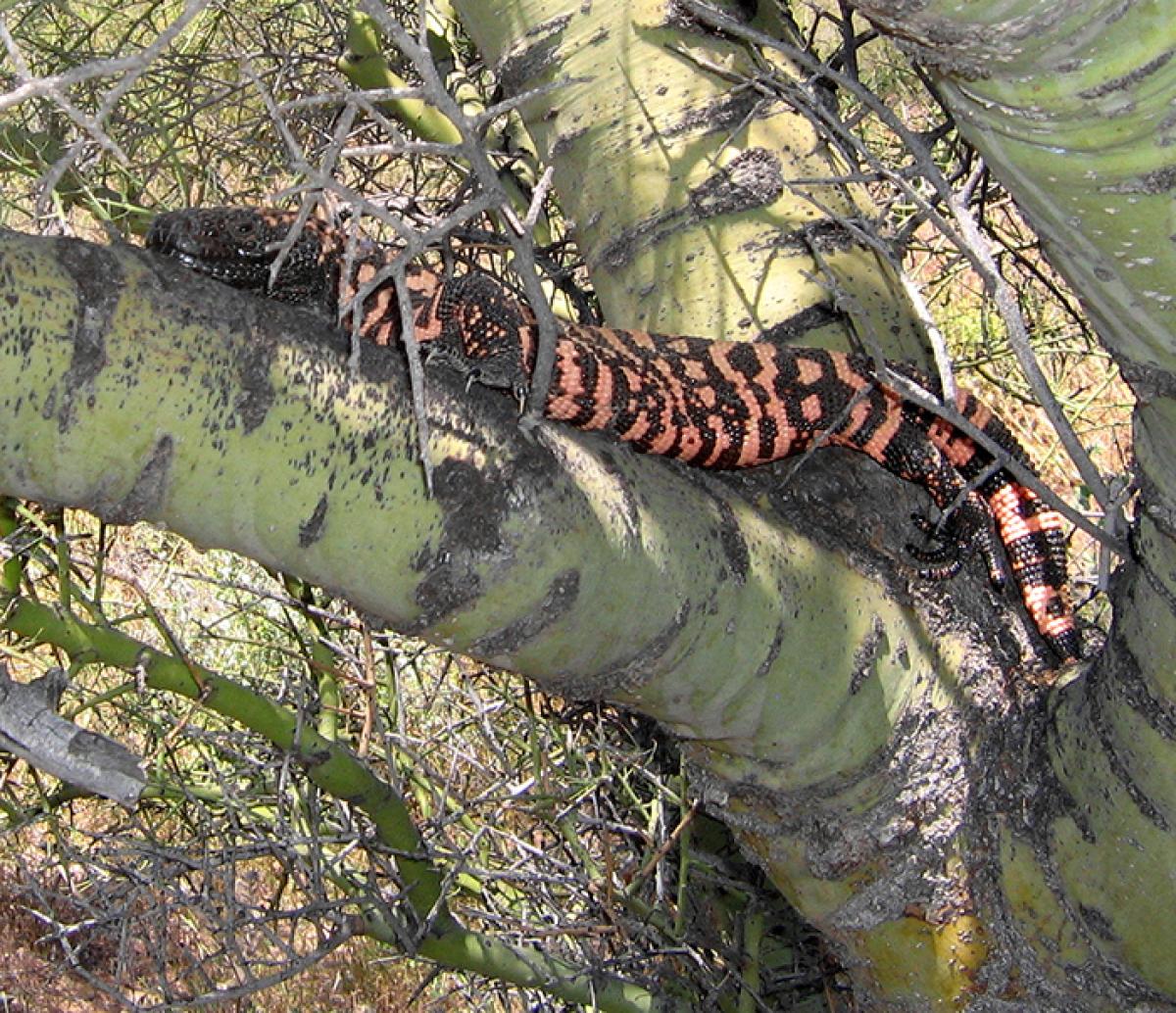Watery Monsters

When you go for a hike in the desert, what are some of the things you should take with you? Water is usually at the top of the list. Most humans can use water bottles or other containers to take water with us, but what can other animals do?
Well, Gilas and some other animals can also carry water bottles (sort of). When we take a drink of water, it hydrates our tissues, and excess water and wastes from our bodies end up in our bladders. At that point, the fluid has to leave our bodies. But things are a bit different for Gila monsters.
When Gilas take a drink of water, it hydrates their tissues as well, and extra water ends up in their bladders. But Gila bladders are very different from human bladders. Gila monster bladders have much thinner walls than ours and they hold special molecules that can create microscopic pores in the bladder. When Gilas store fluid in their bladders, it’s almost like a full water bottle. When they become dehydrated during the hot, dry summer, these pores open in the bladder wall. The Gila’s body can then absorb the water (but not the waste) from the bladder, moving the water back into their blood stream. This helps them remain hydrated when they can’t find any drinking water.
Can Gila Monsters Get Water From Food?

Some animals, like pocket mice, can get a water benefit from some of the food they eat. But the same is not true for Gila monsters. Gila monsters need drinkable water to rehydrate themselves. During the first rains of an active season, you might find a Gila monster drinking from a puddle near its burrow.
Using Water to Cool Off in the Desert
Getting enough water is important to keep your body working properly. But it’s also important for many desert animals because it can be used to help cool down the body. We sweat to cool off, dogs pant, and some animals like kangaroos may lick themselves to cool off. Gila monsters can use water to cool off too. They can lose water across their “leaky” skin, or they can expose moist tissue to help cool down.
The end of the digestive tract in reptiles and birds is called the “cloaca.” Gila monsters can actually expose part of the membranes that make up the cloaca to the outside. They do this by expanding the opening at the end of the digestive tract, which is called the vent. Water can then evaporate from this wet tissue, helping to cool down the Gila monster.
Read more about: Hardy Gilas
Bibliographic details:
- Article: Watery Monsters
- Author(s): Dr. Biology
- Publisher: Arizona State University School of Life Sciences Ask A Biologist
- Site name: ASU - Ask A Biologist
- Date published: 4 Feb, 2020
- Date accessed:
- Link: https://askabiologist.asu.edu/gila-monsters-and-water
APA Style
Dr. Biology. (Tue, 02/04/2020 - 12:11). Watery Monsters. ASU - Ask A Biologist. Retrieved from https://askabiologist.asu.edu/gila-monsters-and-water
Chicago Manual of Style
Dr. Biology. "Watery Monsters". ASU - Ask A Biologist. 04 Feb 2020. https://askabiologist.asu.edu/gila-monsters-and-water
Dr. Biology. "Watery Monsters". ASU - Ask A Biologist. 04 Feb 2020. ASU - Ask A Biologist, Web. https://askabiologist.asu.edu/gila-monsters-and-water
MLA 2017 Style

Researcher Roger Repp snapped this photo of a Gila monster climbing a palo verde tree, possibly to escape heat on the ground. Learn more about Gila monster tree-climbing behaviors in our Top Question, Can Gila monsters climb trees?
Be Part of
Ask A Biologist
By volunteering, or simply sending us feedback on the site. Scientists, teachers, writers, illustrators, and translators are all important to the program. If you are interested in helping with the website we have a Volunteers page to get the process started.

